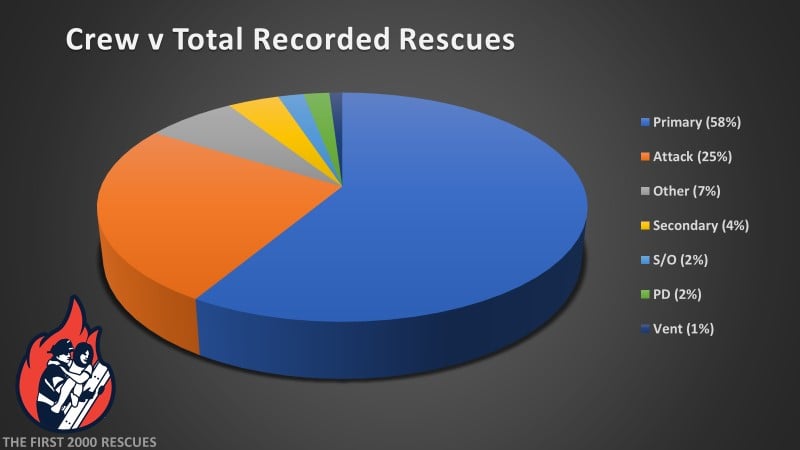|
Data from the first 2,000 recorded rescues (you read that right) has been collected, calculated, and collated for all you nerds.
Data Drop.....Assignment v Total Recorded Rescues. When we look at who is rescuing victims, we see from the graph below that primary search is locating the majority of victims (58%), followed by attack (25%). Primary search and attack combined have found 84% of victims, with the rest, in order, coming from ‘other’ (e.g., IC, backup/on-deck, RIT, etc.), secondary search, salvage and overhaul, PD, and ventilation. It’s likely no surprise that primary and attack are finding the most victims, since they are typically the first crews inside these buildings. Although the fact that one in four victims are being found by the Attack Group might be surprising. This proves that attack IS search, and we must therefore act and train accordingly. Like in all things, the more we learn about something, the more questions arise.
Search Culture 25% of our victims are being located by Fire Attack. I wonder how many of these are because of departments assigning two assignments to one crew Fire Attack/Search? Of those departments that do the above, is it because they have a lack of manpower or is it because they have a lack of Search Culture? What is the survival rate of Fire Attack vs Search locating our civilians? What is the TIME difference between Fire Attack vs Search rescues? - Air brake to locating victim - Locating victim to removal
1 Comment
4/28/2024 03:06:53 am
It's impressive to finish the first 2000 rescue task! Could you describe any noteworthy incidents or difficulties that arose during these rescues?
Reply
Leave a Reply. |
Fire Service WinsA collection of news and articles related to search and search culture. Archives
May 2023
Categories |

 RSS Feed
RSS Feed